Remarketing is a powerful tool for all businesses, and it’s becoming more effective as dynamic remarketing ads become more popular.
In this post, we’ll cover what exactly dynamic remarketing is and how it can work for you and your business.
What Is Dynamic Remarketing?
Dynamic remarketing is a form of digital advertising that allows advertisers to reach potential customers who have previously visited their website.
This can be done through the use of cookies and other technologies, which track users’ browsing history across multiple sites and devices.
The system then shows ads targeted toward those users when they visit websites elsewhere in the internet ecosystem — including search engines, social networking sites, blogs and news outlets — based on what they’ve seen before.
Dynamic remarketing is especially useful for e-commerce businesses as it allows them to retarget people who have abandoned shopping carts or failed to complete purchases on their site.
How Dynamic Remarketing Is Different
Remarketing is a form of online advertising that allows you to reach potential customers who have already visited your site. Remarketing ads are shown to people who have previously visited your site, but did not complete a purchase.
This way, you can use remarketing to increase sales and convert more visitors into paying customers. Remarketing works by using cookies on your website or app so that when someone visits the site and leaves without completing an action (such as adding items to their cart), they’ll see ads that relate to their previous visit—and hopefully get them back on track toward making a purchase!
How Dynamic Remarketing Works
Dynamic remarketing works by creating lists of people who have visited your website but left without converting. This is then used to create personalized ads for each person based on their browsing history and interests.
These ads will appear on other websites in places where they might be more likely to engage with them, such as Facebook, Google AdWords, and Instagram Ads.
Are There Differences Between Remarketing And Retargeting?
The main difference between remarketing and retargeting is that remarketing is more targeted than retargeting, as it focuses on users who have already visited your website. With this in mind, there are many similarities between the two.
Remarketing and retargeting work by showing ads to users who have already interacted with your brand online through any device at all.
However, while remarketing can be regarded as a subset of retargeting because it uses cookies to track people’s activities on the web (and thus has many of the same advantages), it also has its own unique advantages over traditional advertising methods like display ads or search engine marketing (SEM).
Difference Between Standard And Dynamic Remarketing
Dynamic remarketing is a more targeted and cost-effective way of reaching potential customers. In terms of targeting, you can use dynamic remarketing to display your ads only to people who have visited specific web pages or viewed certain products.
This allows you to show your ads only to the people who are most likely interested in what you’re selling at that point in time, thereby increasing the chances that they will convert to your ad.
In addition, dynamic remarketing allows advertisers to set up their campaigns once and then update them as needed without having to rebuild everything from scratch each time (which would be very time-consuming).
Dynamic Remarketing also gives advertisers more flexibility when it comes down to optimizing their campaigns since there are no restrictions on how many times someone should see an ad or how often an advertiser can change/update his/her campaign without having any negative impact on performance metrics such as click-through rate and conversion rate.
Reasons To Use Dynamic Remarketing
Dynamic remarketing is a powerful tool that can help you generate more conversions and sales.
Here are some reasons why you should consider using dynamic remarketing:
- Increased visibility on search engines
- Boosted return on investment (ROI) for your ads
- Targeted offers for repeat visitors
- Enhanced customer experience
What Do You Need To Start Using Dynamic Remarketing?
Dynamic remarketing is a powerful tool that allows you to target customers who have previously visited your website.
Product Or Service Feed
A feed file that contains information about your products or services. The feed should contain information such as the name, price, and image of each product.
You can also include custom parameters in your product feed if you want to target specific customers, for example by location, gender, or age group.
Tag With Custom Parameters
Tags that allow you to identify specific visitors and their actions on your website (e.g., page views, downloads). These tags are used to create targeted ads based on ad groups.
Create Responsive Ads
Ads designed specifically for mobile devices will show when people visit your site from their phones.
Benefits Of Dynamic Remarketing Ads For Your Business
There are many benefits of using dynamic remarketing ads for your business.
Here are some of them:
An Automated Way Of Collecting Product Data
This data can then be used to create personalized ads for your business. This automated way of collecting product data will enable you to save time while also reaching customers at the right time with relevant offers or product updates.
Customer Retention
Dynamic remarketing helps businesses retain customers by providing relevant advertisements based on past purchases or interests. This allows them to keep track of customers who left their site before completing a purchase.
Reduction Of Abandoned Carts
If someone visits your website but doesn’t complete the purchase, they might be interested in your product or service. You can use dynamic remarketing ads to remind them about what they were looking at before leaving your site, which will help bring them back for another visit.
Increase Brand Awareness
When you display dynamic remarketing ads on sites relevant to your business, you’ll be able to reach out to people who weren’t aware of your brand before but may now be interested in what you have to offer. This can lead to more sales and also improve your brand awareness overall.
Decrease Of CPC
Dynamic remarketing ads help decrease cost-per-click (CPC) because they’re only shown to people who have previously viewed your website. This means that those seeing the ad are much more likely to click on it than someone seeing an ad for the first time, resulting in lower CPCs overall!
Better Conversion Rate And ROI
Another benefit of dynamic remarketing is that it can lead to better conversion rates and ROI for your business overall. This is because when you target people with personalized ads based on their past behavior online, they are more likely to convert into customers than if you simply used broad-based advertising methods such as PPC or banner ads.
Auto-Optimization Of Layouts And Bids
Dynamic remarketing ads automatically optimize their layout and bid prices based on how well they perform. This allows you to run more ads without having to worry about how much you spend on them or what they look like in order to get the best results possible.
What Are The Types Of Dynamic Remarketing Campaigns?
Google Ads supports two types of dynamic remarketing campaigns:
- Retail. The Merchant Center must provide feed for this kind of dynamic remarketing.
- Non-Retail. This can be controlled using Google Ads’ Feed Mapping, Feeds, and Feed items.
How To Set Up Dynamic Remarketing
To get started with dynamic remarketing, you’ll need to:
Define your audience.
This is probably the most important part of the process. If you’re not using a tool like Google Analytics or Facebook Pixel to track your site visitors and identify their interests/intentions, it might be difficult to define your ideal customer profile.
Set up ads for each one of those personas (if applicable).
You can do this by creating different ad groups in AdWords or Facebook Ads Manager, adding more information about each audience segment into their ad copy and creatives (images), etcetera.
See which users visit specific pages and how often.
Set up tracking on your website so you know which users are visiting certain pages on your site and how often they visit them.
Most people use tools like Google Analytics or Facebook Pixel for this but there are others as well if you want something a little more customizable than what these two offer out of the box.
Dynamic Display Ads Best Practices
For best practices, let’s use Google dynamic display advertisements. Many of these criteria apply to other ad networks with some adjustments.
Connect Google Ads and Analytics.
Link Google Analytics to Google Ads. You can use Google Analytics data in dynamic remarketing advertising. Google Analytics can help you choose dynamic remarketing audiences based on visit duration, geography, and pages viewed.
Layout-check.
You may wish to start with responsive advertising and let Google choose your layout based on placement. Google automatically adapts responsive advertising for size, look, and format. A/B test specific layouts to find which performs best. The less advertising you run, the longer tests take.
Strategically bid on audience groups.
Bid more on repeat and key page visits. In some circumstances, you may want to create a separate ad group for cart abandoners. Consider excluding short-term visitors. Market to past customers and create remarketing lists with likely buyers using Google Analytics demographics and interest statistics.
Choose a frequency cap.
A frequency cap limits how often someone sees your adverts. You can choose the ideal frequency cap to avoid annoying people with your advertising.
Improve product photos.
Dynamic remarketing uses product feed images. Create appealing adverts with high-quality photos.
Seasonal remarketing ads.
You can show more than just viewed or comparable products. Promote sales, Christmas specials, and other events with dynamic remarketing.
Get the Help of Experts
Dynamic remarketing is a valuable marketing tool that allows businesses to re-engage with their customers and remind them about their products and services.
Dynamic Remarketing can be used for both online and offline marketing, but it requires some time to set up a successful campaign. If you’re looking for help with your Dynamic Remarketing Campaigns or have any questions, feel free to contact LeadOrigin today!





